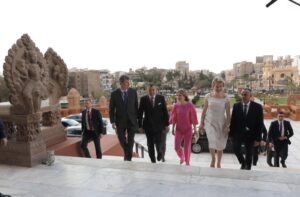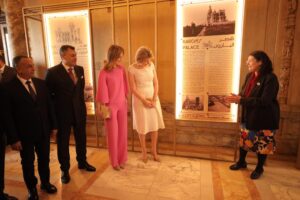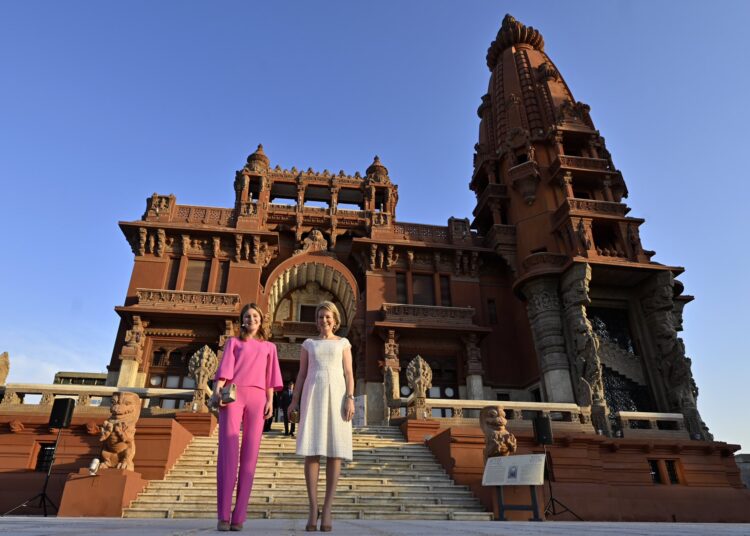Queen Mathilde of Belgium, Duchess of Brabant Princess Elisabeth and Egypt’s Minister of Tourism and Antiquities Ahmed Issa inaugurated Tuesday an exhibition entitled ‘1923-2023: Queen Elisabeth of Belgium in Egypt’ coinciding with the 100th anniversary of the visit by Queen Elisabeth of Belgium and her son Crown Prince Leopold to Egypt to attend the official opening of King Tutankhamun’s tomb in February 1923.
The exhibition is being held at the Baron Empain Palace, which was built in 1911 by Belgian industrialist Baron Édouard Empain in the then new city of Heliopolis, which he established in the desert northeast of Cairo. The palace now serves as a museum documenting the history of Heliopolis through photographs, archival documents, maps, and films.
Belgian Ambassador François Cornet, and Secretary General of the Supreme Council of Antiquities Mostafa Waziry attended the opening ceremony.



Cornet said that Queen Mathilde will follow in the footsteps of Queen Elisabeth during her visit to Egypt in 1923, and will fly to Luxor to visit the tomb of King Tutankhamun.
The exhibition, which runs until April 14, displays photographs, films and paintings highlighting the longstanding friendship between Egypt and Belgium, particularly by the Belgian Queen’s trips to Egypt in 1923 and 1930.
The exhibition sheds light on the opening of the tomb of King Tutankhamun where the Queen and her son were received at that time by Abdel Hamid Suleiman Pasha, Minister of Public Works on behalf of King Fuad, as well as the British Lord Carnarvon, who funded the excavation work on the tomb, and the British archaeologist Howard Carter, the discoverer of the tomb.
In 1930, King Albert and Queen Elisabeth returned to Egypt again on an official visit, followed by a private trip, during which the Queen visited many of its archaeological sites.
During the exhibition, films documenting Queen Elisabeth’s two trips to Egypt are shown for the first time. These films have been preserved in the Royal Film Archive of Belgium (Cinematek) and were recently digitised.
King Fuad’s visit to Brussels in 1927 is also mentioned in the exhibition, in addition to Egyptian Festivals that were organised in Brussels in 1926 and in Heliopolis in 1927.
The exhibition also sheds light on the establishment of the Association Egyptologique Reine Élisabeth in 1923, a well-known association in Belgium that researches ancient Egyptian civilisation. Its library and archives of photographs contain some of the most unique and fascinating collections of ancient Egypt worldwide.
Photos taken from the Queen’s albums are also on display in addition to photographs from the archives of the Royal Palace in Brussels, the library of the Royal Museums of Art and History in Brussels about her travels.
This exhibition is held under the auspices of the Royal Palace of Brussels and the Embassy of Belgium in Cairo, in cooperation with the Tourism and Antiquities Ministry.







Discussion about this post